Online shoppers want to know when their package will arrive, especially if it’s a high-value item or their prescription medication. They may also expect to know when their package is out for delivery, and when it has arrived.
These expectations can put pressure on couriers handling last-mile deliveries to multiple customers. They need to plan the most efficient route for every delivery, provide status updates for customers, and ensure each package arrives on time at the right location. A courier management system can do all of that and more.
In this article, we’ll look at the benefits of using delivery management software and what features to look for when choosing courier software for your business.
Table of Contents
What Is a Courier Management System?
What Are the Benefits of a Courier Management System?
How to Choose the Best Courier Management System

What Is Courier Management?
Courier management is the process of coordinating last-mile delivery operations. Depending on your business model, size, and other factors, it might involve activities like scheduling deliveries and assigning them to drivers, fleet management, route optimization, expense tracking, and fuel management.
What Is a Courier Management System?
Courier management software systems help companies manage all aspects of their delivery operations. Some platforms include GPS tracking, automated driver dispatching, and real-time routing information for drivers. Most courier management systems integrate with CRMs, accounting software, ERPs, and the other tools you might use to run your business.
What Are the Benefits of Using a Courier Management System?
Courier delivery management software automates routine tasks, optimizes routes, and helps companies improve their customer service. These are some of the specific benefits of using software to manage your deliveries:
1. Greater efficiency
Unlike Waze or Google Maps, courier management software allows companies to plan and generate complex, multi-stop routes, accounting for factors like fleet capacity, driver availability, number of stops, and traffic. This eliminates the mistakes that occur when planning routes manually and ensures couriers get to their destinations on time.
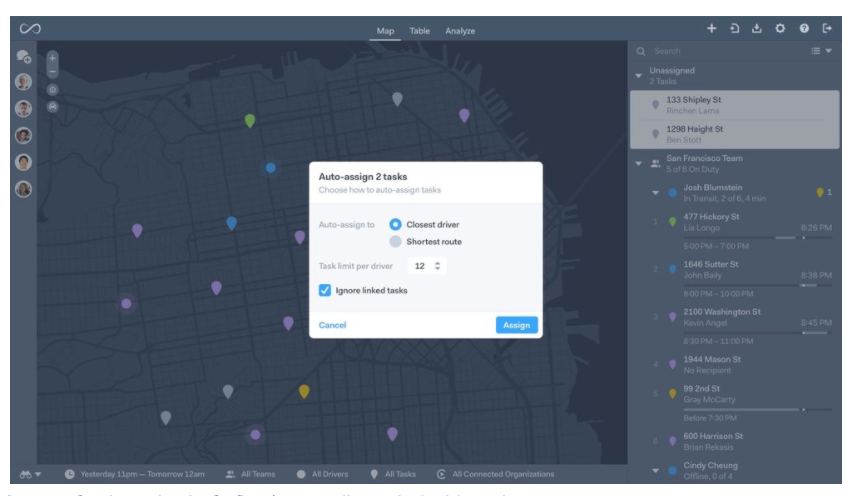
If you’re using Onfleet, the platform’s dispatch management feature automatically adjusts routes based on real-time traffic or weather conditions. Onfleet then notifies couriers about route changes, and the new route appears in their navigation. Managers can also set rules to automatically assign deliveries based on proximity and route distance.
2. Reduced costs
Route management features optimize routes to reduce fuel costs and driver overtime. The best courier management software can also give you insights about how to increase fleet capacity, which is an additional cost benefit.
3. Improved customer service
Courier management software helps organizations improve the customer experience with features like predictive ETAs, driver chat, and real-time tracking — which keeps customers in the loop regarding when their order will arrive.
In-app communication tools allow customers to call or text drivers, and drivers can contact customers to get clarification on delivery instructions.
Feedback capture and analytics can help you improve the delivery experience by focusing on the touchpoints that need attention.
4. Actionable data
Delivery management software should provide actionable data presented in a way that’s easy to understand. With Onfleet, users can monitor team and individual performance against key metrics like on-time rate, distance traveled, or feedback scores.
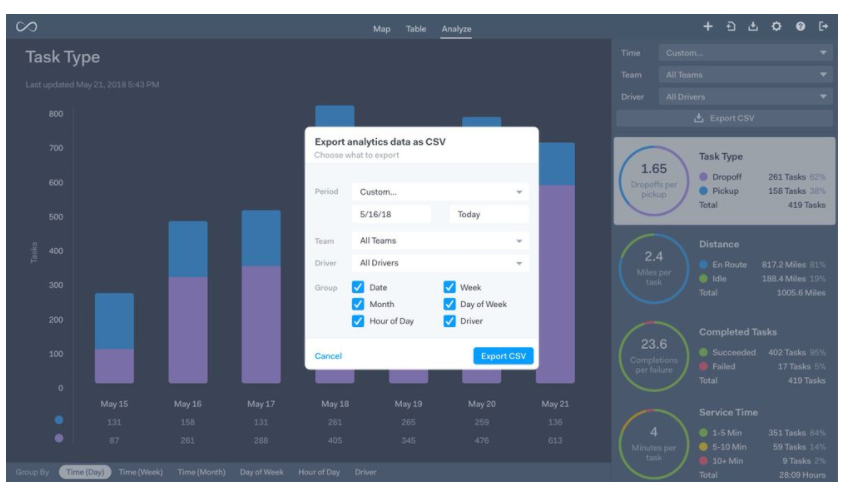
You can track performance over time or see how metrics change by time of day or individual driver. You can also sync your courier management solution to your CRM to better understand the link between delivery KPIs and revenue, churn rates, or loyalty.
5. Increased driver safety
With automatic rerouting and a live link that connects drivers directly to the dispatch center, courier software helps drivers keep their eyes on the road — they don’t have to worry about manually updating their routes to avoid traffic, road closures, or other obstacles.
6. Greater control
Courier management systems put you in control of the entire dispatch and delivery process. You can manage scheduling, driver assignments, route planning, and quickly respond to customer service requests.
Case Study
NYC-based MetroSpeedy hustles as business demand grows

“Delivery is here to stay, and we, along with Onfleet, are last mile logistics veterans. We look forward to expanding our expertise and business operations. I see autonomous delivery bots in our future, continued investment in our technology, efficiency upgrades, and the continued ability for micro-targeted advertising for our customers. And of course, very speedy deliveries! That’s our name and that’s our game.”
— Nancy Korayim, Founder and CEO, MetroSpeedy
Read the full case study here.
How to Choose the Best Courier Management System
When looking for the best courier management software for your business, look for a solution that works with your existing tech stack and can scale alongside your business.
Here are some of the most important things to consider when sizing up your options:
1. Ease of use
It doesn’t matter how impressive the technology is, if you can’t convince your team to use it, it’s basically worthless. As such, your first priority is finding a platform that’s easy for drivers to use on the smartphones they already have. Make sure the platform is compatible with both Android and iOS and offers a simple onboarding experience.
2. Integrations
A standalone app might be easy to use, but it’ll create extra work and data integrity issues if it doesn’t sync with your existing processes.
Before you commit to a solution, you’ll want to find out whether it works with the tools you use every day. That might include your e-commerce store, CRM, CMS, payment management system, accounting platform, and inventory management software.
For even more flexibility, look for a courier management system that offers API integration. Onfleet provides an open-source repository for developers and API wrappers that make it easy to build your own integrations in Python or JavaScript.
3. Use cases
Look at what other brands are using the platform, and how they’re using it.
If you look at our customers, you’ll notice that we work with a lot of different companies, from e-commerce and cannabis brands to laundromats and restaurants. You can read our case studies to learn how companies have accomplished their goals using Onfleet.
4. Pricing/value
How much will this platform cost you? Can you get all of the features you need within your budget? How does pricing scale as your team and delivery count grow?
And finally, find out if a free trial is available. It’s always a good idea to test-drive a new platform before you buy.
5. Features
Here are some examples of features you should look for:
Auto-dispatch
Automated dispatch management provides on-demand driver assignments, reducing service times and labor costs by routing deliveries to the right driver at the right time.
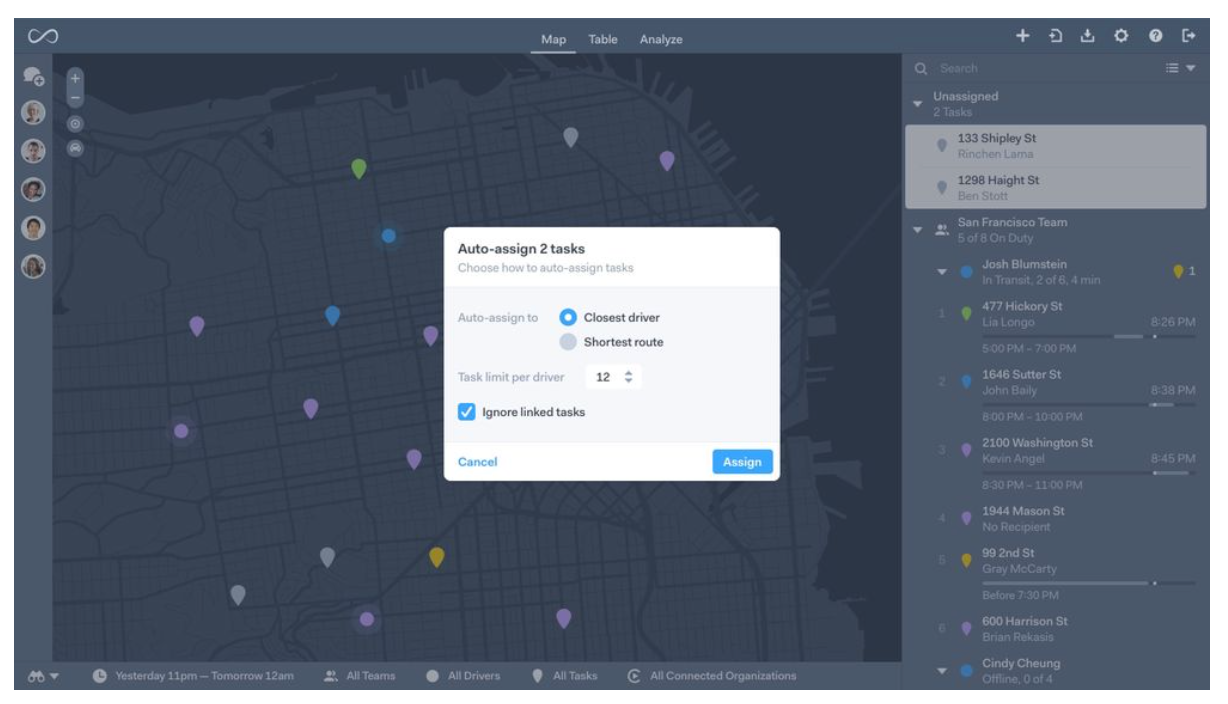
Route optimization
Route optimization eliminates manual route planning — a time-consuming, error-prone process involving a lot of variables. Courier management software streamlines the process and instantly generates color-coded routes and destinations.
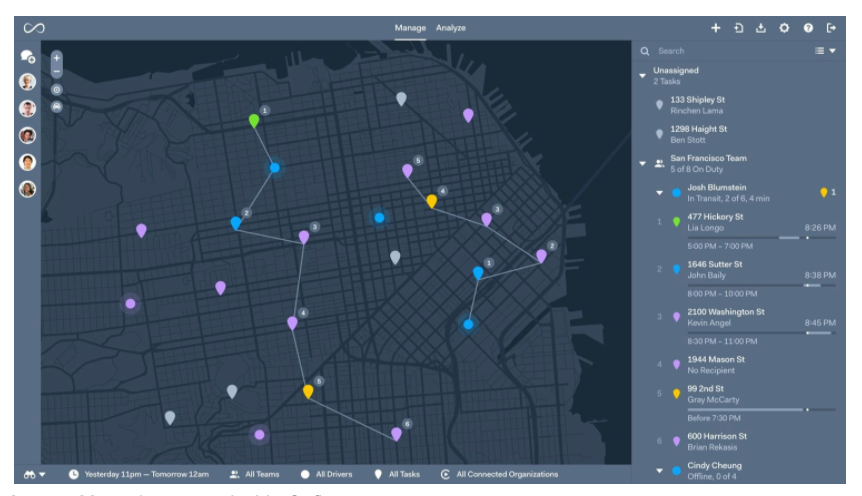
Predictive ETAs
Unlike traditional “out for delivery” updates, predictive ETAs give customers accurate delivery estimates using machine learning to predict arrival times based on driver location, performance history, traffic, and more.
Status updates
Status updates keep customers informed about their delivery.
You can set up rules in Onfleet to send automatic updates to customers when orders ship, reach a specific destination, or are out for delivery.
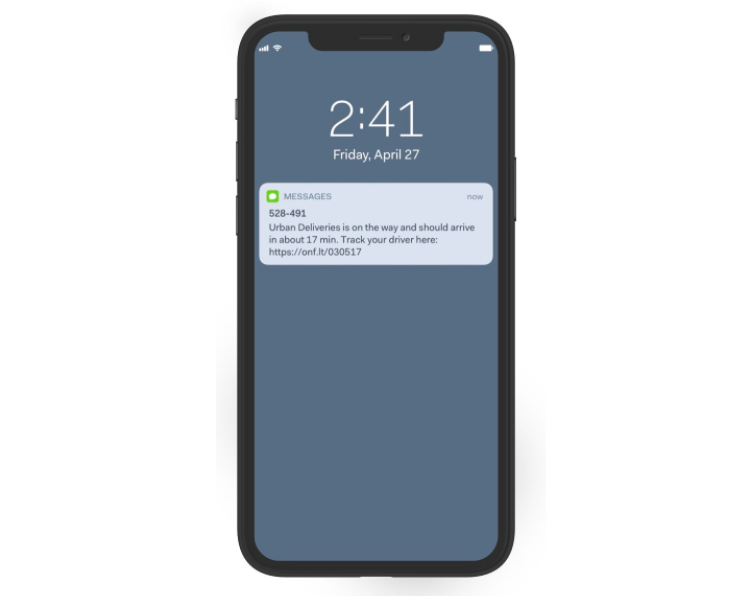
Proof of delivery
Proof of delivery adds a layer of accountability to the delivery process. Drivers can capture a photo of the delivered package, which protects brands from false claims regarding “missing” packages and shows customers where their package is. Onfleet even features a barcode scanner that ensures the right package was delivered.

Use Onfleet’s ID verification for alcohol or cannabis deliveries and electronic signature capture for high-value orders.
Contactless signatures
Speaking of signatures, providing a contactless option is a must-have for COVID-era deliveries. Onfleet eliminates the need for a face-to-face signature capture and delivery hand-off.
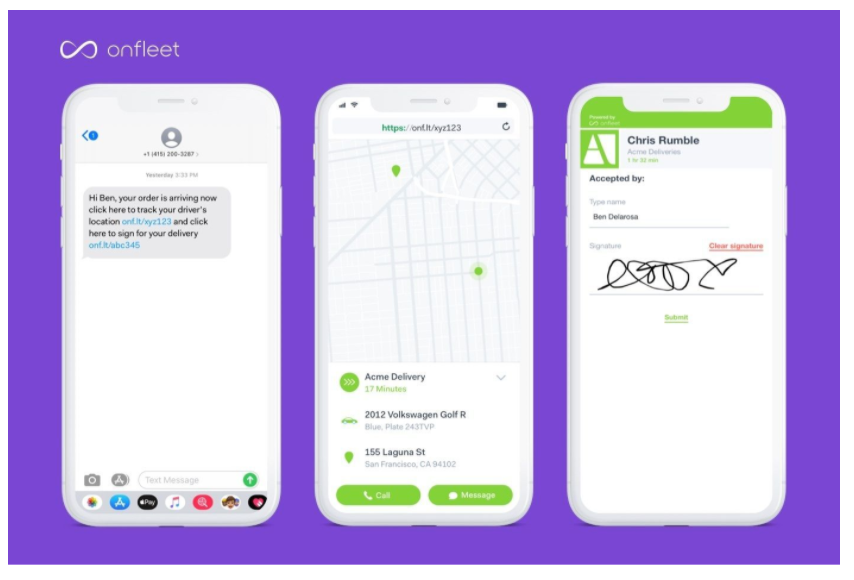
Drivers can collect contactless signatures ahead of the delivery, which saves time and ensures that deliveries that include alcohol, cannabis, or prescription drugs make it to the right person.
Delivery metrics
Your courier management software should provide total visibility into delivery metrics, driver performance, and customer satisfaction scores, as well as other factors like weather and traffic patterns.
With Onfleet, you can track success rates, service times, distance traveled, and more. You can also segment data by team or individuals, and track performance within a specific timeframe.
6. Scalability
Make sure that the solution you choose can support the scalable delivery infrastructure of your operation as it grows. Onfleet allows you to add routes, regions, drivers, and vehicles with little effort.
7. Uptime monitoring
Outages and availability issues can cause real problems for drivers, dispatchers, and the business in general. Look for a courier management tool that offers transparency around system status.
For example, Onfleet provides system performance metrics and an online incident history log. As you can see below, it’s broken down by features, making it easy to find out about maintenance or performance issues (though we try our best to avoid them).

8. Support
Finally, you’ll want to check the level of support that is available.
Does the company offer phone support? Email? Chat? Knowledge base content? What about guided demos, training, and onboarding?

Are You Ready for a Better Approach to Courier Management?
Onfleet has powered over 100 million deliveries and has helped grocers, retailers, and direct-to-consumer brands streamline the last mile and provide the best delivery experience.
Our courier management system is easy to use, supports a long list of integrations, and includes robust features designed to drive efficiency, customer satisfaction, and cost savings. Sign up for a free trial to see Onfleet in action.
